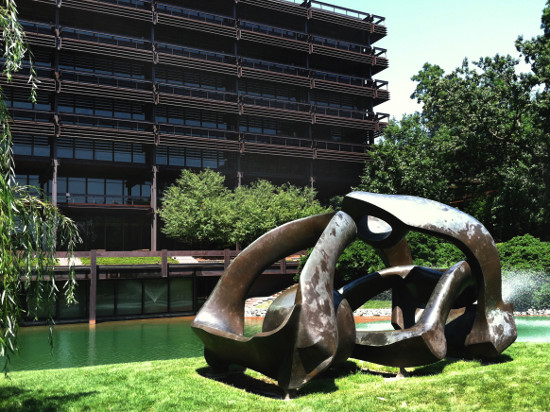
Hill Arches is a bronze sculpture created in 1974 by one of the most prominent sculptors of the 20th Century, Henry Moore (1898-1986). Moore's monumental works are often based on human forms, but as its title suggests, this piece is meant to be seen in a relationship with its environment.
It is located on a small island in the reflecting pond directly in front of the Deere & Company world-headquarters building in Moline, off John Deere Road a little more than three miles east of Interstate 74.
Viewed from the island, the sculpture is massive. Weighing more than 8,800 pounds, it is 18 feet in length and 12 feet high. But when viewed from a distance, its open spaces give it an unfolding, rising quality. Though large, it appears to float just above the lawn, its base hidden by the grass. This is a fitting paradox for a sculpture that works both with the modern architectural style of the world headquarters and with its surrounding landscape.

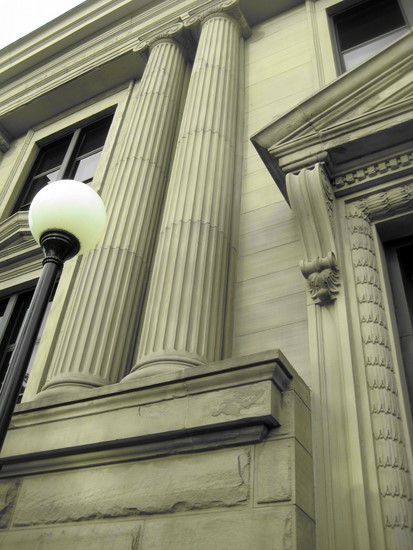 More than a century separates the opening dates of the most recent and the oldest public-library buildings in the Quad Cities. The differences between these buildings reflect our changing relationship to the environment, and their architecture reflects the evolution of the library from a symbol of culture to a community center.
More than a century separates the opening dates of the most recent and the oldest public-library buildings in the Quad Cities. The differences between these buildings reflect our changing relationship to the environment, and their architecture reflects the evolution of the library from a symbol of culture to a community center.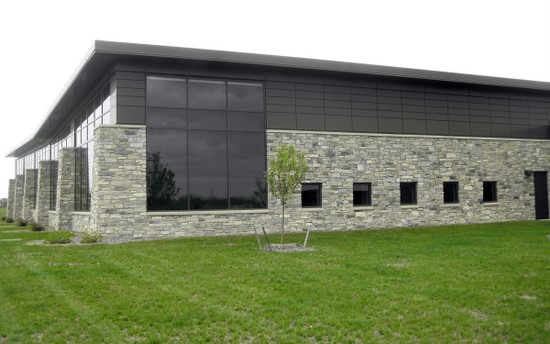
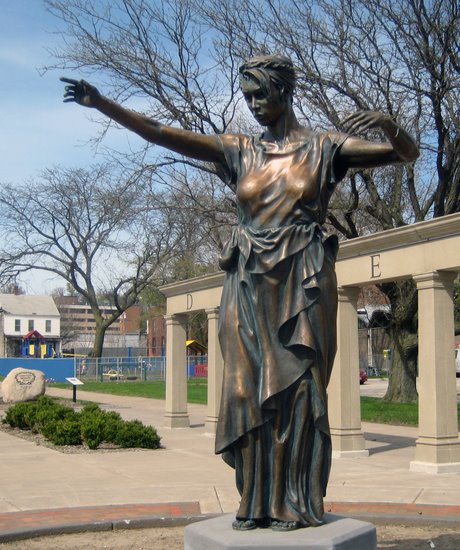
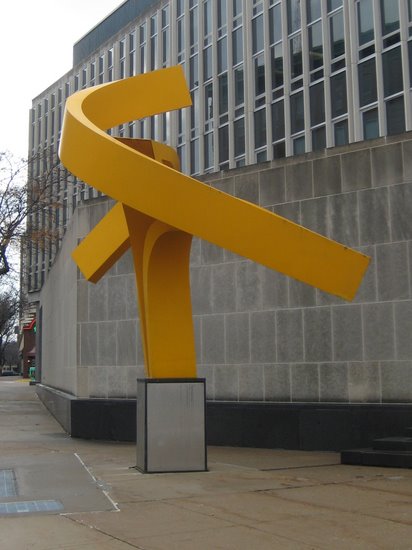
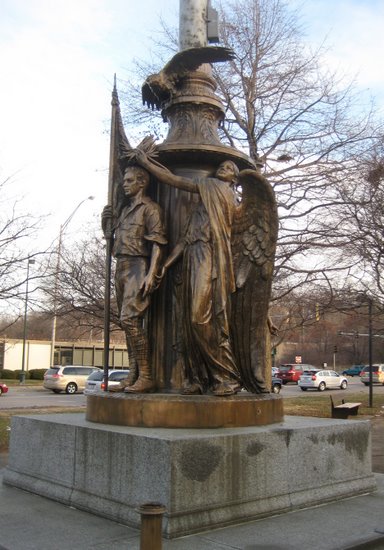
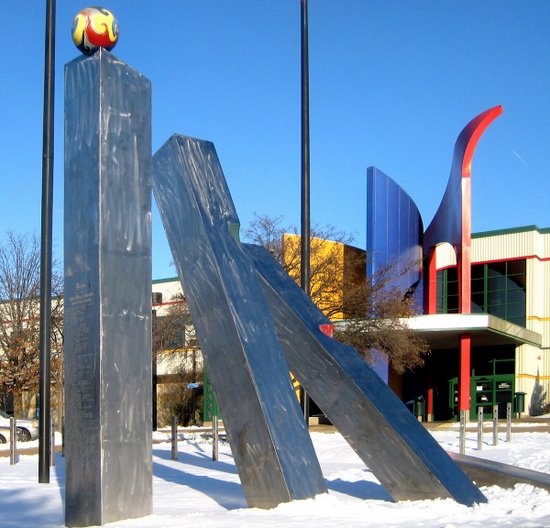
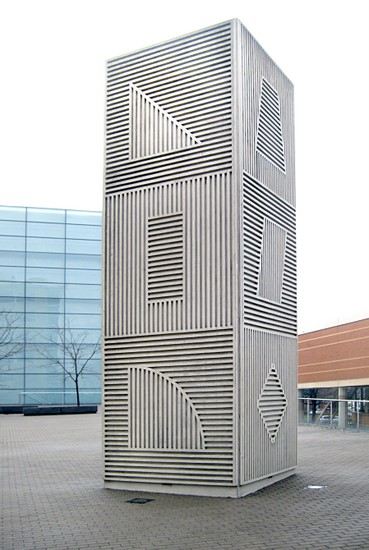
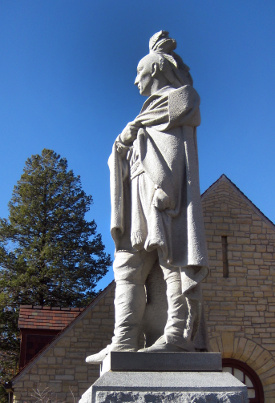 Standing on a ridge overlooking the Rock River, an 18-ton granite statue of Black Hawk dominates the space before the Watch Tower Lodge at the Black Hawk State Historic Site (1510 46th Avenue in Rock Island). This is near the location of the Native American village Saukenuk, the largest settlement in Illinois when it became a state in 1818. The statue's commanding presence tells us that this was a man of great importance.
Standing on a ridge overlooking the Rock River, an 18-ton granite statue of Black Hawk dominates the space before the Watch Tower Lodge at the Black Hawk State Historic Site (1510 46th Avenue in Rock Island). This is near the location of the Native American village Saukenuk, the largest settlement in Illinois when it became a state in 1818. The statue's commanding presence tells us that this was a man of great importance.







